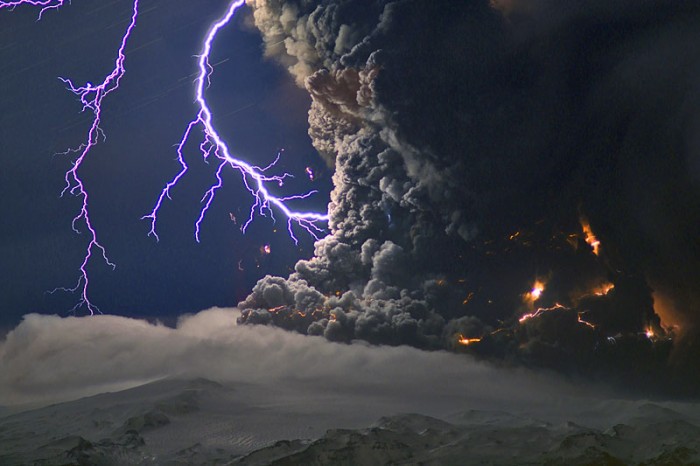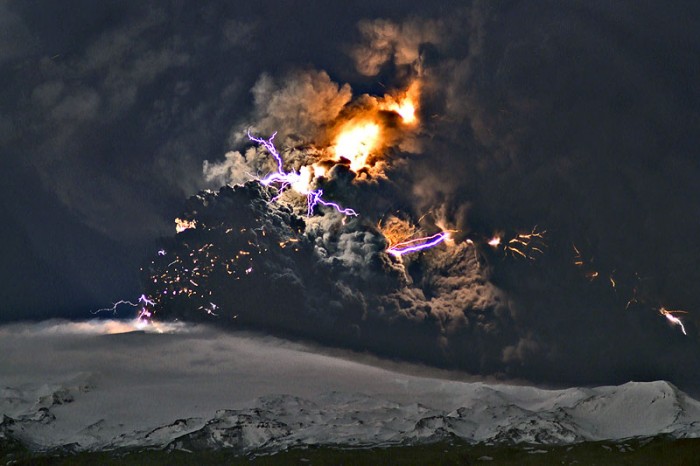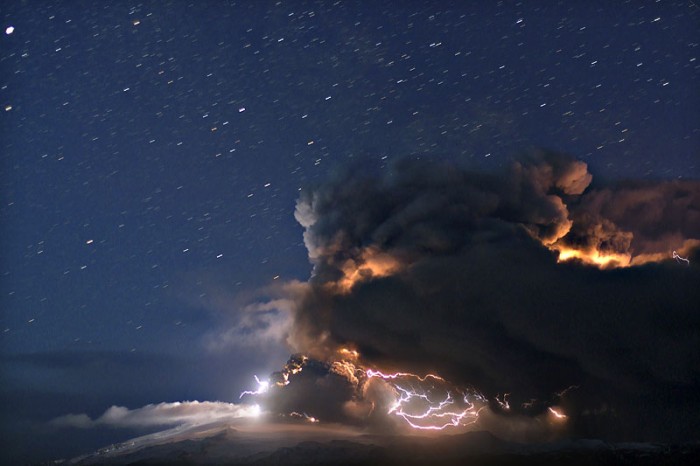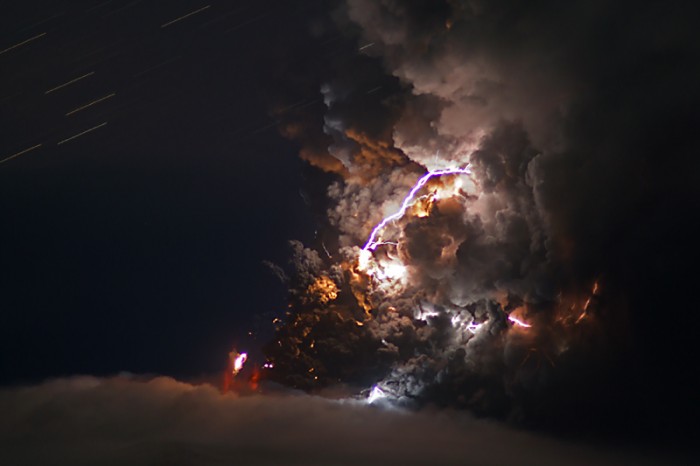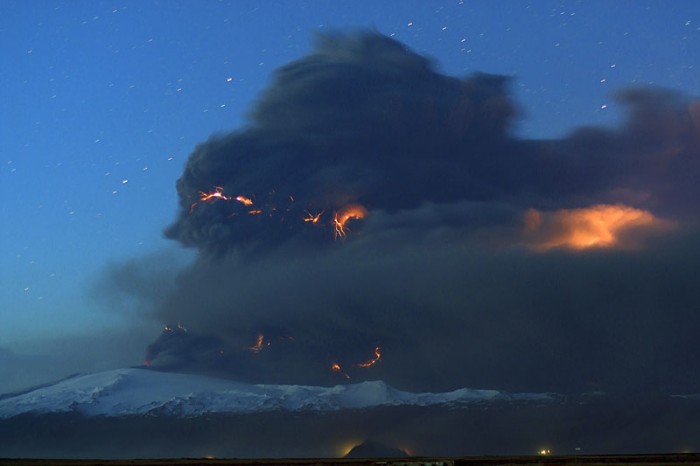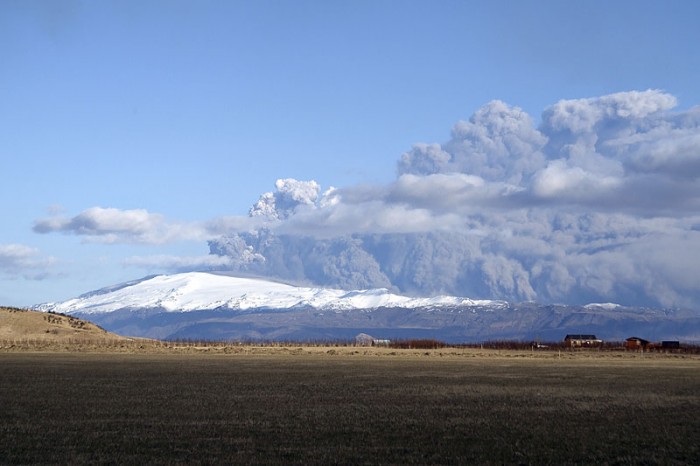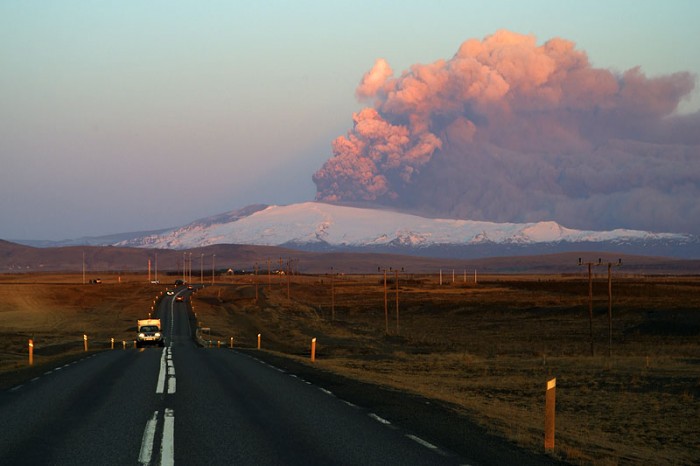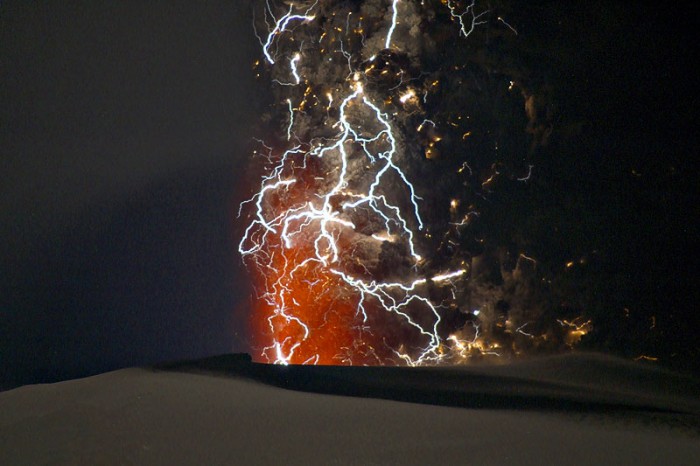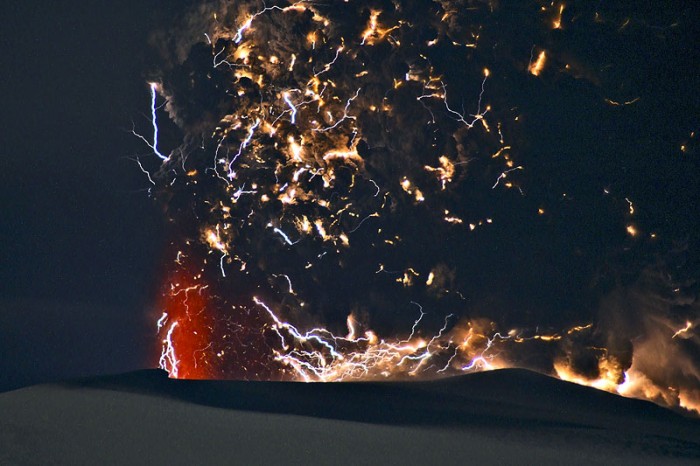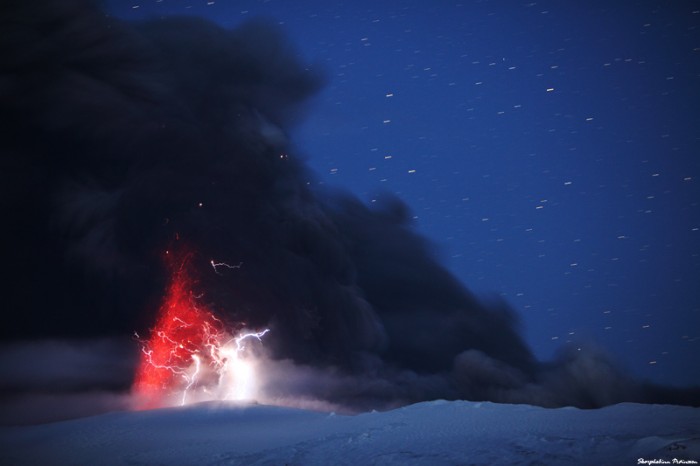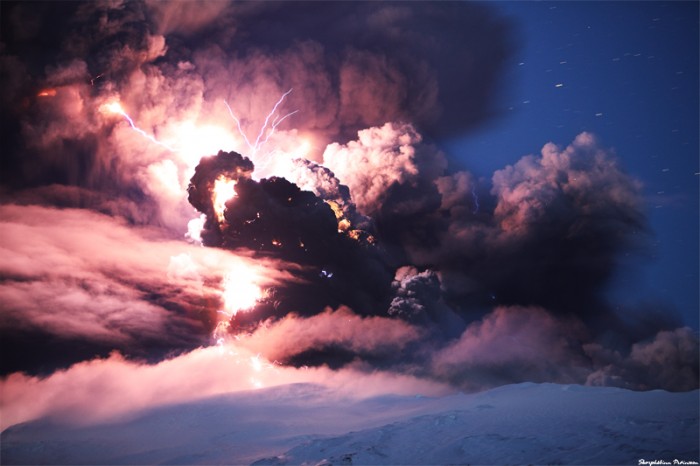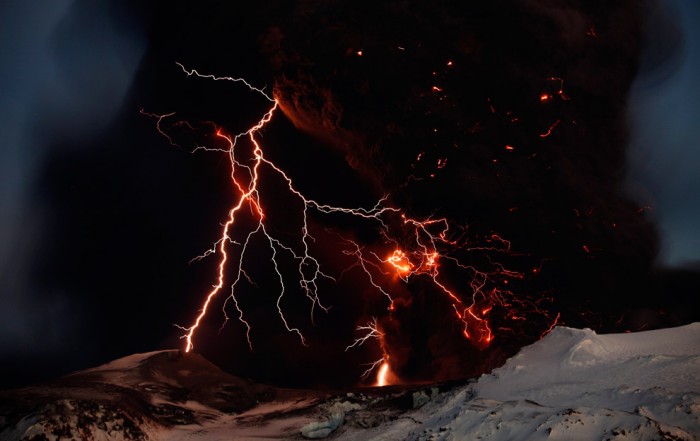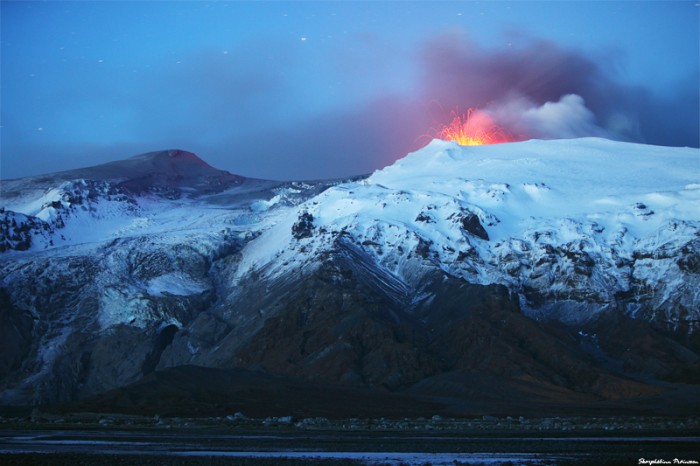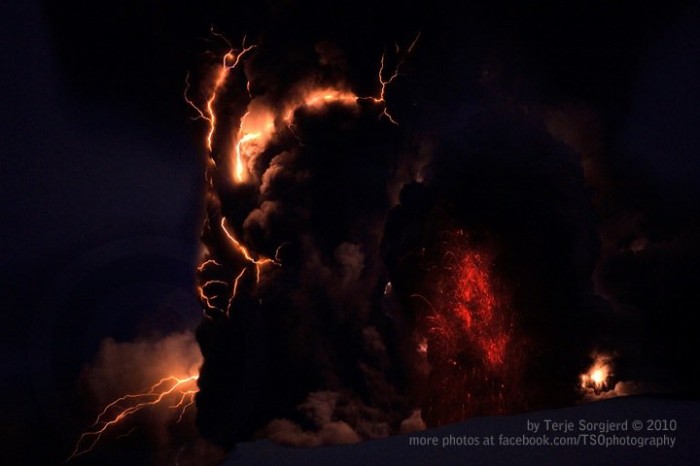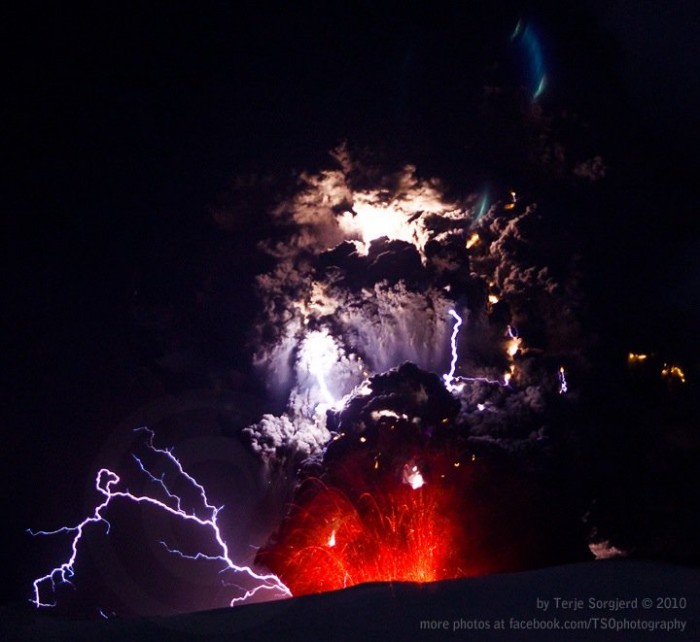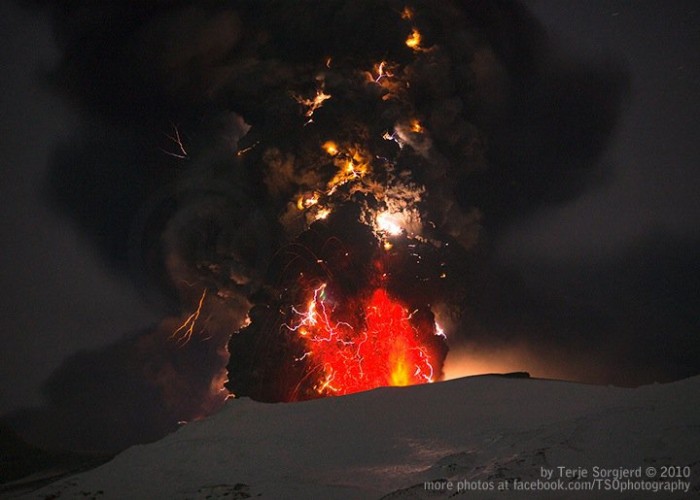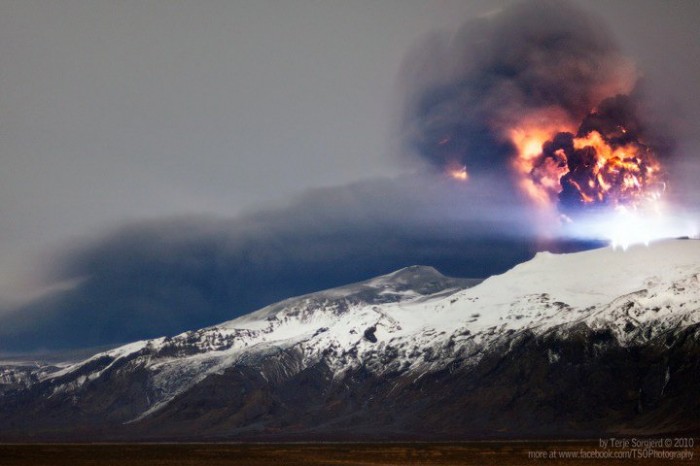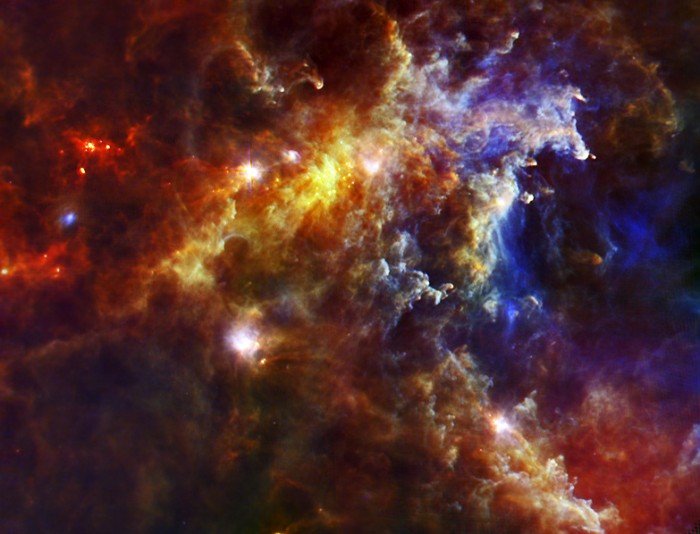Large Eruptive Prominence Produced by the Sun
What’s happened to our Sun? Last week, it produced one of the most power eruptive prominences ever seen. Pictured above, the prominence erupted in only a few hours and was captured in movie form by NASA’s twin Sun-orbiting STEREO satellites. A quiescent solar prominence is a cloud of hot solar gas held above the Sun’s surface by the Sun’s magnetic field. Unpredictably, however, prominences may erupt, expelling hot gas into the Solar System via a Coronal Mass Ejection (CME). As pictured above, many Earths would easily fit under the expanding ribbon of hot gas. Although somehow related to the Sun’s changing magnetic field, the energy mechanism that creates and sustains a Solar prominence is still a topic of research.
Source: NASA
Pictures of Eyjafjallajökull
Here are some amazing photographs of the current eruption of the Eyjafjallajökull volcano on Iceland:
Update: More pictures from Marco Fulle:
Update 2: More pictures from Skarphéðinn Þráinsson:
Update 3: Even more photographs of Eyjafjallajökull at Boston.com - The Big Picture, like:
Update 4: Two more great shots by Skarphéðinn Þráinsson, showing how the volcano has passed into the next stage of the eruption, and is literally sparkling lava:
Update 5: More amazing images of the eruption from Terje Sørgjerd:
Update 6: See also Time-Lapse Footage of the Eyjafjallajökull Eruption where Sean Stiegemeier artfully shows footage of the eruption from May 1st to May 2nd.
Update 7: Lava drive-in by Kristján Freyr Þrastarson: 
Absolutely surreal!
If you’re wondering how to pronounce ‘Eyjafjallajökull’, here’s a recording.
Credits: Marco Fulle, Terje Sørgjerd, Skarphéðinn Þráinsson and Lucas Jackson
The Rosette Nebula
This image from the Herschel Space Observatory shows most the cloud associated with the Rosette nebula, a stellar nursery about 5,000 light-years from Earth in the Monoceros, or Unicorn, constellation. Herschel collects the infrared light given out by dust. The bright smudges are dusty cocoons containing massive embryonic stars, which will grow up to 10 times the mass of our sun. The small spots near the center of the image are lower mass stellar embryos. The Rosette nebula itself, and its massive cluster of stars, is located to the right of the picture.
Source: NASA
Hubble Confirms Cosmic Acceleration with Weak Lensing
A new study led by European scientists presents the most comprehensive analysis of data from the most ambitious survey ever undertaken by the NASA/ESA Hubble Space Telescope. These researchers have, for the first time ever, used Hubble data to probe the effects of the natural gravitational “weak lenses” in space and characterize the expansion of the universe.
Update: The information in the video might be a little misleading; see NASA/ESA’s own press release below for the details on what has actually been discovered.
For more information, see NASA/ESA’s news release.
Shatter Your Spare Time
Shatter is an awesome, modern take on classic brick-breaking games like Arkanoid and DX-Ball:Shatter also sports one of the best soundtracks that I’ve heard in a video game. An entrancing mix of 80’s new wave, stadium rock and intergalactic space rock opera.
Shatter is available for Windows (on Steam) and Playstation 3 (on PSN) Website | Soundtrack


